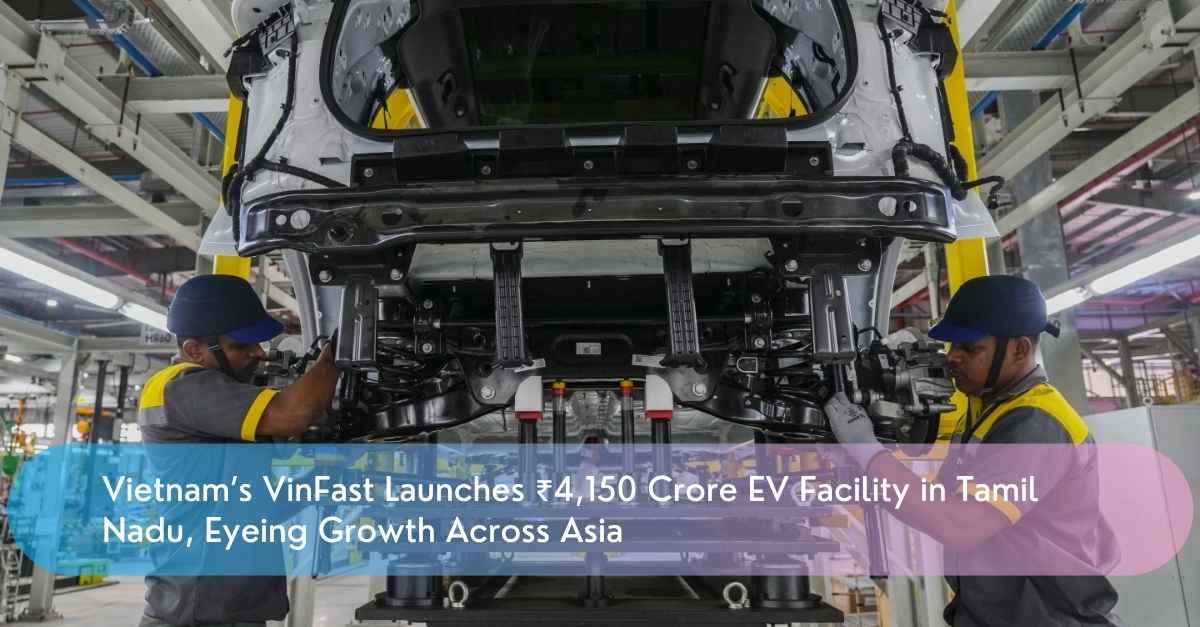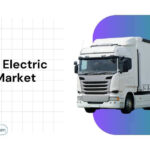04 August 2025, India
With growing geopolitical tensions, trade constraints, and cost pressures making China less appealing as a single manufacturing base, multinational corporations are increasingly attempting to diversify their supply chains by moving production to India.
India as a Strategic Manufacturing Alternative
VinFast’s decision to establish a factory in Tamil Nadu is part of a larger trend among global OEMs. India’s confluence of big home demand, favoured EV policy environments (i.e. FAME-II), and geopolitical neutrality is making it a competitive rival to China. Tamil Nadu factory is the first VinFast factory in India and represents a $500 million first phase of a proposed $2 billion commitment to the country. Tamil Nadu was chosen from 15 state possibilities on account of its qualified workforce, strong auto infrastructure, reliable logistics and closeness to the port city of Thoothukudi the keys to future exports to South Asia, the Middle East, and Africa.
| Category | Details |
| Total Investment Goal | $2 billion (VinFast + Tamil Nadu Government) |
| Initial Committed Investment | $500 million (First 5 years) |
| Factory Location | Thoothukudi, Tamil Nadu |
| Initial Production Capacity | 50,000 electric vehicles per year |
| Planned Scalable Capacity | Up to 150,000 vehicles annually |
| Jobs Created (Est.) | Over 3,000 (direct and indirect employment) |
| Export Regions | Sri Lanka, Nepal, Mauritius, Middle East, Africa |
| Main Models (Initial) | VF 6, VF 7 (Right-hand drive premium SUVs) |
| Local Sourcing Initiative | Ongoing talks with Indian component suppliers |
Supply Chain Strategy & Localization Efforts
VinFast is exploring local sourcing agreements with Indian component producers, some of whom might move their manufacturing to the new facility. This supports resilience in the event of geopolitical upheavals and is consistent with India’s “Make in India” campaign.
Additionally, VinFast avoids expensive import charges by producing locally, which is important for cost management because Indian customers are price sensitive. For instance, if totally imported, even a low-cost model like the VF‑3 (around ₹9,200 USD) would be prohibitively costly.
Market Positioning & Product Strategy
VinFast plans to launch sales of high-end SUVs with right-hand drive configurations in India, including the VF6 and VF7. In the rapidly expanding Indian electric vehicle industry, these vehicles will face off against Tata, Mahindra, and Chinese companies like BYD.
VinFast’s first models might be in higher value sectors given market preferences and affordability criteria (the average automobile price is about ₹1.15 million, or US$13,000). This implies that the business is aiming to attract wealthy early adopters in order to establish brand reputation prior to scaling down.
Global Context: Lessons from U.S. and Europe Strategies
Viasat’s recent investment in India highlights the company’s strategy shift towards Asia, which is best understood in light of its prior experiences in the US and Europe. These markets have presented major obstacles in terms of volume sales, regulatory barriers, and customer adaption, despite providing worldwide visibility and brand elevation.
When VinFast announced its intention to enter the U.S. market in 2022, it grabbed headlines with audacious claims of fashionable electric SUVs, affordable prices, and a lineup that was entirely electric. The business went further by:
U.S. Market: Early Enthusiasm, Modest Results
- Establishing a U.S. headquarters in Los Angeles
- Launching models such as the VF 8 and VF 9 SUVs
- A $4 billion facility in North Carolina is being committed to, with an anticipated completion date of 2025
European Expansion: Strategic but Cautious
As part of its global drive, VinFast has opened showrooms in Europe, including Germany, France, and the Netherlands, and started preorder campaigns for its electric cars. But it faced into a number of obstacles:
- EU regulations are complicated, particularly those pertaining to consumer protection and emissions compliance.
- High entrance costs into the market (marketing, service networks, logistics).
- Customers’ mistrust of a relatively new brand into a market already crowded with well-known European automakers making the switch to electric vehicles (Volkswagen, Renault, BMW, etc.).
Even while VinFast hasn’t made a formal exit from Europe, it seems that its top priorities have changed to Southeast Asia, India, and Africa markets with lower entry barriers and faster growth potential.
Strategic Takeaways
| Region | Early Strategy | Challenges Faced | Lessons Learned / Shift |
| USA | High-profile entry with direct sales, IPO, local plant | Low sales volumes, delivery issues, limited brand trust | Market penetration needs time and trust |
| Europe | Showrooms + launch of VF models | Complex regulations, tough competition | Too costly and slow for immediate returns |
| India | Local plant, supplier localization, export base | Still building brand awareness, price sensitivity | Focus on cost, scale, and regional exports |
Forecasting the Future: India’s Evolving EV Landscape
In January 2025, sales of electric cars (EVs) in India increased significantly, rising 19.4% month over month and 17.1% year over year to reach 1,69,931 units. The number of electric vehicles sold in India increased by 49.25% to 1.52 million units in 2023. Even though the industry is still in its infancy, it is growing steadily.
With a 30% objective by 2030, Indian automakers intend to introduce about a dozen new EVs in 2025, with an emphasis on premium models, as EV sales in India increased 20% despite a slowdown in worldwide demand. The Indian EV battery market is expected to grow at a compound annual growth rate (CAGR) of 38.7% until 2032, from US$ 10.3 billion in 2024. This growth is fuelled by government initiatives, such as subsidies and infrastructure development, designed to encourage the adoption of Electric Vehicles (EVs). Moreover, rising consumer awareness about environmental sustainability and the increasing cost-effectiveness of EVs further drive market growth.
The government of India has launched multiple schemes and policies for encouraging EV adoption. For instance, The FAME India Scheme is a landmark scheme for encouraging superior battery and registered vehicles. It is directed towards making accessible & eco-friendly public transport and would be applied to vehicles employed in the public transport or registered for commercial use in e-3W, e-4W, and e-bus segments. Privately owned registered e-2Ws will also be included under the scheme as a mass segment. These initiatives have a strong impact on the India electric vehicle market, driving the growth in EV sales.
Strategic Timing Meets Long-term Vision
VinFast’s opening of its Indian facility represents more than geoeconomic expansion it’s a wager on India becoming a world EV production hub. The action addresses pressures to diversify world supply chains while taking advantage of India’s growth path and export opportunities.
The question is whether VinFast will successfully price, create local brand loyalty, and expand within a price-conscious and competitive market. With conducive policy environments and wise localization strategies, though, the India operation may prove to be a critical chapter in VinFast’s international narrative.











